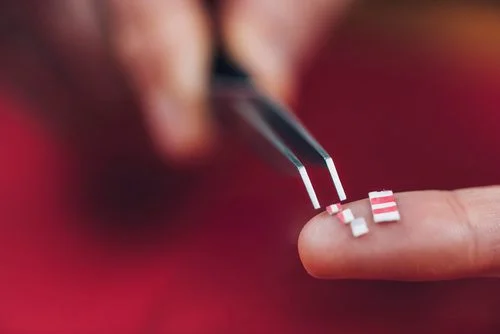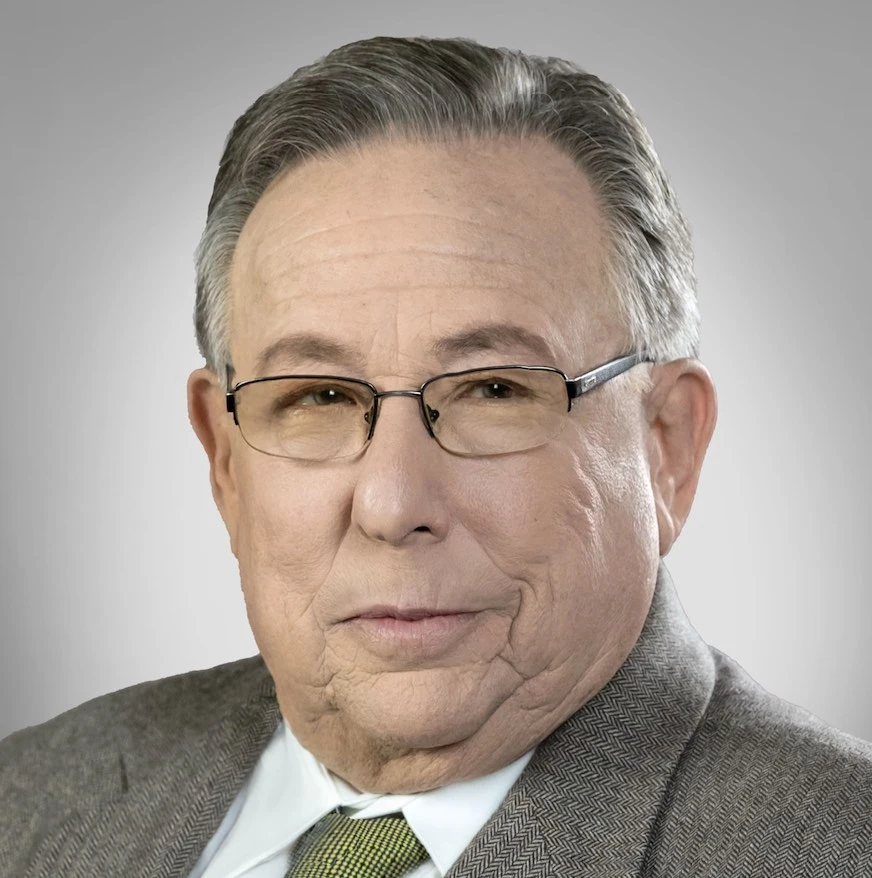LSD
LSD or lysergic acid diethylamide is a potent hallucinogen drug that is illegal to use and produce in the United States.

Other Names Names: Acid, Blotter, Blotter Acid, Blue Cheer, Dots, Electric Kool-Aid, Hits, Lucy in the Sky with Diamonds, Mellow Yellow, Microdots, Purple Haze, Sugar Cubes, Sunshine Tabs, Window Pane
LSD is a classic hallucinogen and is one of the most powerful mind-altering chemicals in the black market. As a mind-altering drug, it acts on the central nervous system and changes a person’s mood, behavior, and perception of the world around them. It’s main mechanism of action is attributed to its effect on the brain chemical serotonin, which is a neurotransmitter that regulates a host of biological functions, including behavior, mood, cognition, reward processing, learning, memory, and sensation.
LSD has been listed as a Schedule I drug under the federal drug scheduling system since 1971, which means that it has a high potential for abuse. While it is not generally considered an addicting drug, and its potential for physical dependence is low, frequent use of LSD can lead to tolerance.
Why People Abuse LSD
Although lysergic acid diethylamide was used in the past for non-FDA approved indications, including for a range of psychological disorders, there are presently no existing approved indications for LSD-assisted therapy. As as Schedule I drug, LSD has no currently accepted medical use in the United States.
Production of LSD in the U.S. is confined in clandestine laboratories, and sale always occurs illegally. Those who abuse the drug use it mainly for its mind-altering effects. As a hallucinogen, LSD causes hallucinations or things that one might experience as reality but are actually created by the mind. These may include things that one might see, hear, or feel.
In taking the substance, users generally desire a “good trip,” which can manifest as stimulating or pleasurable experiences. Examples of these include:
- Euphoria or “rush,” which is a feeling of intense excitement and happiness
- Diminished inhibitions
- Feeling of not being afraid of anything
- Feeling of floating or being removed from reality
- Sensation of thinking extremely clearly
However, users of LSD can also experience the exact opposite, which is known as a “bad trip.” Examples of experiences during a bad trip may include:
- Terrifying or frightening hallucinations
- Having out-of-control or irrational thoughts, like fear of dying for no reason, or desiring to harm oneself or another person
- Experiencing a spectrum of emotions at the same time or in quick succession, which can be very unpleasant
The danger of LSD is that its effects can be very unpredictable, which means you’ll never know what sort of trip you might experience if you take it.
The Different Ways LSD Is Abused
Lysergic acid diethylamide is an odorless and colorless substance that comes in multiple forms and is taken in various ways. The methods of administration may include the following:
- Swallowing as tablets (“microdots”), as capsules, as sugar cubes, or as gelatin squares (“window panes”)
- Imbibing in liquid form
- Injecting directly into the bloodstream in liquid form (“shooting up”)
- Absorbing through the lining of the mouth via pieces of drug-saturated absorbent blotter paper; the paper pieces are sometimes decorated with cartoon characters, which is why they are also called “loony tunes”
- Inhaling or “snorting” the powdered form of the drug through the nose
LSD’s Adverse Effects
Consumption of LSD can affect the body in multiple ways. Adverse effects of LSD use may include the following:
- Dilated pupils
- Increased heart rate
- Increased blood pressure
- Rapid breathing
- Elevated body temperature
- Sleeplessness
- Loss of appetite
- Dry mouth
- Tremors
- Sweating
- Anxiety
- Depression
- Schizophrenia
Long-Term Effects of LSD
Studies have shown that hallucinogen persisting perception disorder is a potential long-term complication of intoxication to some hallucinogens, including lysergic acid diethylamide. According to the Diagnostic and Statistical Manual of Mental Disorders, Fifth Edition (DSM-5), this condition makes patients who are not currently intoxicated by LSD experience perceptual symptoms that they first experienced during past hallucinogenic experiences involving the drug .These fragmentary recurrences of some aspects of the drug experience—also called “flashbacks”—can be experienced for days, weeks, or even months after the individual last used the drug.
Among those who consume large quantities of LSDââ, persistent symptoms of psychosis can also continue to manifest long after the drug’s initial effects have subsided. Individuals who experience extremely profound departures from reality may have a challenging time adjusting to real-life situations.
Detecting LSD Overdose in a Person
Overdosing on lysergic acid diethylamide is very much possible. According to the U.S. Drug Enforcement Administration, LSD overdose can manifest as lengthier and more intense “trips” and as symptoms of psychosis.
LSD overdose can also result in the death of a user. This is why if you suspect overdose in yourself or another individual, you should call 911 or your local emergency medical services at the soonest possible time.
Symptoms of LSD Addiction
While lysergic acid diethylamide is not known to be addicting, it does cause tolerance, which leads individuals to take more and more of the drug to produce the same effect.
Despite its low potential for addiction, the general criteria for substance use disorders should still apply in the diagnosis of LSD addiction. According to the Diagnostic and Statistical Manual of Mental Disorders, Fifth Edition, the symptoms of LSD use disorder may include the following:
- Using LSD in larger amounts or for longer periods than intended
- Wanting to cut down or stop using LSD, but not being able to
- Spending a lot of time to get and use LSD, or to recover from using it
- Experiencing strong cravings for LSD
- Inability to manage commitments or responsibilities due to LSD use
- Continuing to use LSD, even when it causes problems in relationships
- Giving up important activities because of LSD use
- Continuing to use LSD, even when it puts you in danger
- Continuing to use LSD, even when physical or psychological problems may be exacerbated by use of the substance
- Increasing tolerance to LSD, which means needing higher and higher doses of the drug to achieve the desired effects
- Experiencing LSD withdrawal symptoms when use is suddenly stopped
LSD Withdrawal Symptoms
According to existing scientific literature, lysergic acid diethylamide is known to cause psychological dependence, but evidence for it causing physical dependence is limited, considering that most individuals who ingest the drug experience such extreme highs that chronic daily misuse of the substance is often difficult to achieve.
Nevertheless, there have been documented cases of individuals experiencing physical dependence following chronic use of LSD. When use of the drug is stopped abruptly, withdrawal symptoms can manifest. One study published in the Journal of Substance Use lists the possible symptoms as follows:
- Panic attacks
- Anxiety
- Sweating
- Tremors
- Restlessness
- Dizziness
- Fatigue
- Dysphoria
- Lack of sleep
Note that the emergence of withdrawal symptoms is not necessarily indicative of addiction to LSD. If you experience withdrawal symptoms, it could simply mean that you have developed a dependence on the drug, and you need medical intervention to help you stop using the substance gradually and safely.
LSD Detox
Adverse withdrawal symptoms resulting from dependence on LSD need to be addressed at a medical facility through a process known as detoxification. A detox program is supervised by doctors and other medical personnel, and it typically involves tapering the patient off the drug being abused, in addition to providing the necessary symptomatic medicines and nutritional supplements to restore them back to health.
Withdrawal symptoms resulting from dependence on LSD or any other drug can be painful and uncomfortable, so it’s best to undergo a detox program at a medical detoxification facility. There, dedicated staff members will be available round the clock to ensure your comfort and safety throughout the process.
How LSD Addiction Is Treated
LSD abuse can have a devastating impact on your health and your life in general. While lysergic acid diethylamide is not generally considered to be an addictive drug, it is still a potent substance that can cause extreme changes in your mood, behavior, and perception.
Treatment for LSD use disorder begins when you recognize the problem. After you decide that you want to do something about it, the next step is to get the help you need. In the U.S., patients are generally afforded these two options:
- Outpatient LSD addiction treatment programs: This setup is usually offered to patients with more moderate symptoms and are considered low risk in terms of non-compliance to treatment regimens. When you undergo an outpatient LSD addiction treatment program, you will have more freedom in that you will be able to carry on with most of your daily routines. The only difference is that you’ll be asked to attend regular treatment sessions at the facility of your choice
- Inpatient LSD treatment programs: On the other hand, an inpatient LSD addiction treatment program will be more intensive and will require patients to live in a facility, where they can be monitored by the medical staff and given proper care and support. If your symptoms are more severe, your doctor will likely recommend inpatient treatment for you.
There are currently no existing FDA-approved medications to treat hallucinogen use disorders such as those that may be caused by LSD. This means that the treatment program you’ll be in will likely use behavior change techniques like counseling, talk therapy, and family behavior therapy to help you better understand what causes your behaviors and why you abuse the drug. Involving family members, such as a cohabiting partner, a parent, or a sibling, as well as some of your close friends in some of these sessions can also help.
Call Now to Get the Treatment You Need
Breaking free from LSD abuse may be one of the most important challenges you’ll ever face in your life. When you decide to get treatment, you’re essentially giving yourself a new lease on life. It’s a good thing that it isn’t a journey that you have to face alone. There are professional rehabilitation and treatment centers that are ready to lend a helping hand.
Call Better Addiction Care now at (800) 429-7690 to speak to a recovery support advisor and to find a treatment facility that best suits your needs. They can help you verify your insurance status to check if your policy already covers inpatient or outpatient addiction treatment. Most insurance plans do provide coverage for such medical services, but in the event that your policy doesn’t, our advisors can help you find other ways to finance your treatment.
LSD: Its Origins and History
Although LSD was first developed in 1938 by Dr. Albert Hofmann, a researcher with the Swiss chemical company Sandoz, its hallucinogenic effects were only discovered by accident in 1943. Dr. Hoffman, who was then synthesizing LSD-25, unintentionally ingested a small amount of the acid and later perceived odd shapes with a vivid, kaleidoscopic play of colors.
To know whether the bizarre effects came from LSD, Hoffman conducted a self-experiment on April 19, 1943. He dissolved 250 millionths of a gram of lysergic acid diethylamide tartrate, the crystallized salt form of the compound, and drank it. Hoffman was not expecting any effects, considering the minuscule amount. But within 40 minutes of ingestion, he experienced dizziness, anxiety, visual distortion, need to laugh, and signs of paralysis.
Once the negative symptoms subsided, Hoffman’s mood changed for the better. The following day, all his senses were heightened, and the world seemed newly created. Believing that lysergic acid can be useful in neurology and psychiatry, Hoffman started experimenting on animals and, eventually, humans.
In 1947, Sandoz introduced LSD as a cure-all solution for psychiatric disorders, from sexual perversions and alcoholism to schizophrenia and criminal behavior. Through a research program called Project MKUltra in the early 1950s, the US Central Intelligence Agency (CIA) introduced LSD into the US, in the hopes of using the drug as a form of truth serum. The drug became well-known in the 1960s and was even promoted by doctors from well-known universities.
Nonetheless, by the end of the 1960s, the downside of LSD was revealed to include mental breakdowns, psychotic reactions, and suicidal tendencies. Murders and other criminal acts that were linked to LSD use were also reported. Sandoz ceased LSD production in 1965, and psychotherapists stopped using it for treatment purposes. Subsequently, the US made possession of LSD illegal on October 24, 1968.








